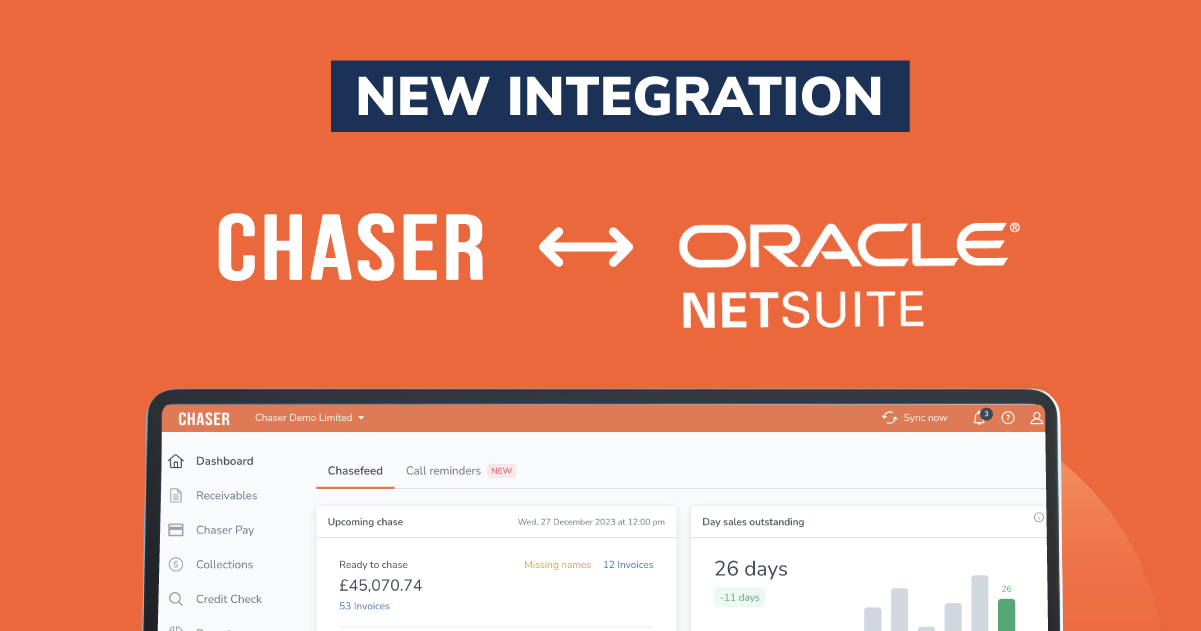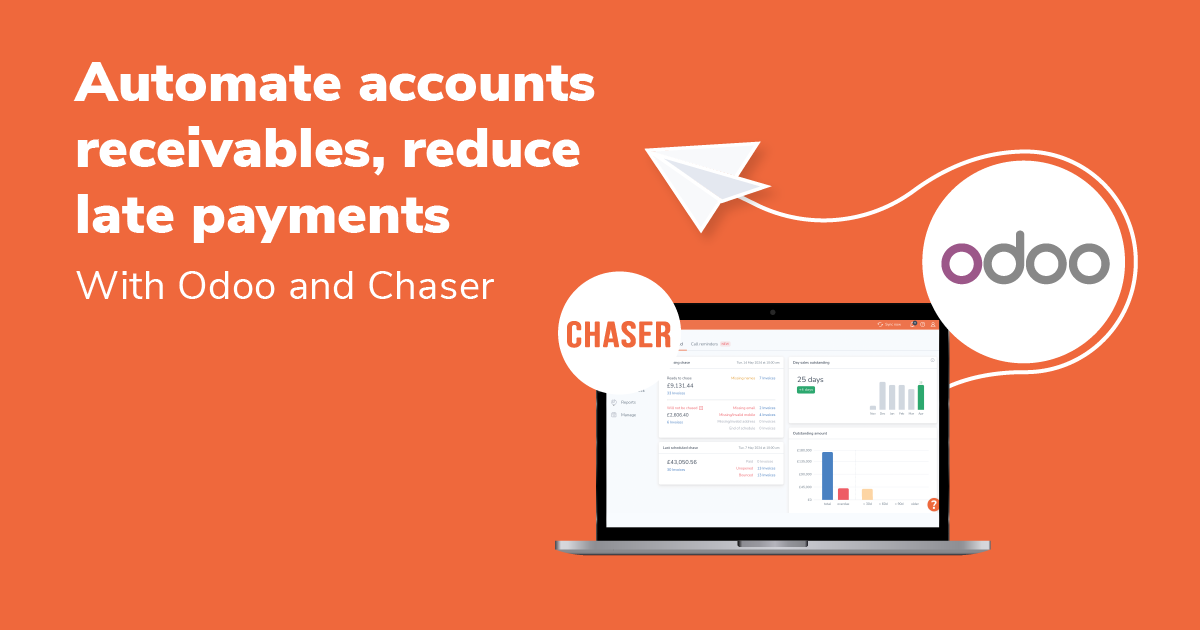Do you struggle to find the time to chase customers for your payment? Are you slogging away entering data onto slow and outdated systems? Maybe it's time to step up your systems and go digital.
A manual accounts receivable system is tedious and outdated. It also leaves a lot of room for costly human error. The effects on your balance sheet can be significant including slower cash flow.
By contrast, the benefits of accounts receivable automation are considerable. A customised, automated accounts receivable automation system will assist with two things:
- It will save you time
- It will save you money
What's not to love?
This allows for valuable resources to be redirected elsewhere, making a firm more efficient all around.
By using an automated system, you will optimise your accounts systems and workflows, which will bring in cash faster, thereby improving your cash flow. Sound like a great solution?
What are accounts receivable?
Accounts receivable, or AR is money due to a company for products or services that have been outlaid but not paid for as yet. Accounts receivable automation is sometimes confused with accounts payable – money that the enterprise owes for purchases they have made. Simply put, receivable is money coming in, and payable is the money going out.
While some businesses require a full upfront payment before a product is given or service provided, most of them only require a deposit. Some companies don't ask for cash or any form of payment upfront at all.
The payments outstanding are listed on balance sheets, and there is a lot of tedious data input required. If you do not have a good system in place, these records can quickly get out of hand, and a company can find itself out of pocket.
An accounts receivable automation system takes away human error risks such as typing mistakes and misplacement of documents.
As we know, the concept of automated accounting systems is not a new one, but until recently, even some of the computerised side of these systems required manual input. In recent years, however, accounting systems have taken great strides toward being more automated and user-friendly.
Types of accounts receivables
Receivables can be separated into three categories to better understand what you are working with.
Accounts Receivable
These are amounts owed for general credit purchases. Often worked over a 2-month or 60-day period they are considered current assets.
Notes receivable
Notes receivable are funds in the form of a written promise or promissory note. This states that the customer owes the company an amount and is a written promise to pay an amount by a set date. Notes due in a year or more are long-term assets; those under a year are still considered current assets.
Other receivables
Wage advances, loans to employees, and interest raised from notes are all considered other receivables. They carry a different financial risk to a company and so are listed differently to accounts and notes.
5 steps to managing accounts receivable
A proven system goes a long way to ensuring accounts are paid on time. When working with accounts receivable, there are several tips to follow to ensure things are running as smoothly as possible. Here are five to consider.
Extension of credit
When you determine whether a customer's credit should be extended or not, you need to look at their payment history and their statements. Often missed payments result from something out of their control, such as losing a job or an emergency in the family. There can also be internal errors, lost payments or paperwork, especially if you are still manually accounting for AR.
Payment terms
Always document your payment terms in writing and make sure all terms are agreed to and understood. Make sure each phone call, text, or email is documented, so there is no confusion. Some businesses offer incentives for prompt payments, a smart move if you can manage it.
Profession and itemised invoicing
Always send a professional and itemised invoice. Make sure payment terms and banking details are visible to avoid any back and forth.
Send automated follow-ups
Manually issuing invoices and managing customers is time-consuming and can be harder to track with multiple emails. Automated reminders pop a friendly payment reminder message to customers when payments are upcoming or overdue. They also leave an electronic “paper trail”, which is easily downloaded into a report if needed. Many people are often busy and will forget that payment is owed – it is not ill-intended in any way; it is just day-to-day life!
Up your collection efforts
As a worst-case scenario to a lack of payment after all other options have been exhausted, have a step up in your collection. Involve debt recovery if needed, but always give a customer warning of what you intend to do.
If no payment is forthcoming, follow through with your accounts receivable processes. This way, other customers will learn that there is a boundary that can only be pushed so far. If you make idle threats, this will be noted too and taken advantage of.
What Are The Benefits Of Accounts Receivable Payment Processing Automation?
Manual data capture is very labour-intensive and time-consuming. Using an automated accounting system transfers this workload to technology. While many may consider automating the system to be the death of accountancy, it is a chance to learn a new skill and take some of the load off.
Automated systems are an opportunity for business leaders and accountants to get more bang for their buck – less work and stress for better results. If you have upscaled and more efficient accountants and a system that is the same, you have a winning formula for accounts receivable.
Automated programs can create invoices, send reminders, and create lists based on simple data input. They can be integrated with various payment types, such as credit cards, bank transfers and payment portals.
The following are some benefits of AR automation.
1. Simple and easy
Automating your accounts receivable systems takes away the formatting of documents and duplication of work. In the initial setup, client or customer data from your accounting system is automatically pulled into the receivables software, and two-way integrations mean both systems stay up to date, saving you on manual data entry. Account information can be automatically supplied on your digital paperwork so there is no more back and forth for account details to delay the payment process.
You can also pull multiple reports on customers and payment histories at the click of a button rather than involving a lengthy data capture session.
2. AR software
The software installed to automate your accounts systems can also be beneficial in other areas. While it will speed up your workflow and impact cash flow, it can also be used at a management level.
Managers can keep an eye on their accounts teams to see if they are working efficiently and making any changes.
While there is an element of automation in most accounting programs, the accounts receivable automation process is generally sold as a separate product providing an advanced function. Integration of existing systems is also important for the success of accounts receivable automation.
3. Out with the old
Manual systems can negatively impact cash flow, affecting company growth, reaching business goals, and overall revenue.
Hence, another one of the benefits of accounts receivable automation is the stability it gives payment processing when invoicing, following up, and recording payments or flagging problems like invoice disputes and queries. The system will automatically gather data and based on this can alert you to any payment issues or trends with bad credit or outstanding payments.
A manual system requires a lot of time spent on administration, chasing for signatures and sign-offs, and the creation of documents and datasheets. An automated system takes away from the daily grind of payment processing, making systems quick, efficient, and user-friendly.
4. It's the little things
Small changes lead to big improvements. With an automated system in place, you will find fewer issues overall:
- Better workflow
- Access to real-time data
- Better communication between employees and customers
- Improved time management
- Streamlined systems for better cash flow and liquidity
- Speedy real-time data retrieval
In a manual workflow, you will encounter delays and bottlenecks that will slow cash flow
- Lost or misplaced documents
- Work duplication
- Complex manual processes
- Time-consuming administration
5. Standardise your procedures
An automated system means that everyone is on the same accounting page for payment processing. When all data sources are the same, everyone is working based on the same, up-to-date information there is less likely to be confusion.
AR automation systems facilitate this by sharing information across various stakeholders in the organisation. For example, an automated AR system can inform salespeople at the front end that a specific client hasn't paid. These customer-facing individuals can then solicit faster payments and issue reminders and dunning notices without excessive internal admin, leading to reduced costs.
6. Employee retention
Another one of the significant benefits of accounts receivable automation systems is employee retention.
Employees who feel under pressure and continually stressed and confused are less likely to stay with a company. Furthermore, those subjected to repetitive manual tasks such as manual data entry and invoice chasing that are typical in accounts receivable can lack motivation and are prone to human error. In contrast, those who are able to automate monotonous tasks are relaxed and have time to enjoy their job, so are likely to perform better and stay longer.
Happy employees also lead to happier customers. If you enjoy dealing with a person, you will make more effort to get them what they need. Helpful and friendly customer service goes a long way to improving incoming information.
With a more streamlined system, customers will not find themselves transferred from department to department trying to find out simple information. A direct and effective approach will lead to better payments and less stalling.
7. Improved Dashboard
Another of the top 10 benefits of accounts receivable automation is the improved speed and efficiency a comprehensive dashboard offers. It makes it easier to provide better customer service, get real-time data and save time, avoiding sending unnecessary invoices and ensuring that you keep track of who owes what.
Visualisations make customer data more visible and tractable, cutting down on manual AR process requirements and freeing up your AR team to do more. Order management and accounting are simplified for even low-volume businesses.
8. Reduced Human Error
Another of the significant benefits of accounts receivable AR automation is that it helps to reduce human error. Creating and issuing invoices and one of the many challenges with manually accounting for transactions. It is tedious, dull work prone to mistakes.
However, one of the benefits of AR automation for payment processing is a reduction in human error. Integrated datasets can automatically fill in customers' details, including shipping details and purchase orders. Furthermore, better accuracy saves time. AR automation helps organizations meet operational efficiency targets and reduce time-consuming interactions to resolve customer issues compared to paper-based and manual accounts.
9. Lower Costs
Lower costs are also a benefit of automated AR. Proper AR automation reduces lost revenue risk by ensuring the issuance of invoices and managing customer communications more affordably.
Automating any paper-based manual process can save money by reducing input costs, such as printing and mailing paperwork to various addresses.
10. Faster payments
Lastly, when you use automated AR, it lets you better manage the AR process, helping you receive payments faster. For example, you can send out a higher volume of invoices to customers more accurately. You can also do things like customise invoices to make it easier for customers to confirm purchases and include features to simplify and speed up approvals.
Fear of change
Many companies stick with their outdated systems because they fear the changeover. The idea of introducing new processes in the form of accounts receivable automation can seem daunting.
But in the long run, the benefits of AR automation assist firms in their receivable processes in many ways as we've seen. These seemingly small changes add up and are well worth the perceived risk. In fact, automated receivables systems like Chaser can be integrated with your accounting system in just 2 minutes, and have been seen to save users 15 or more hours per week on receivables management.
With accounts receivable automation benefits explained, you're ready to start including it in your business. Automation offers many business advantages, enabling you to provide better customer service and improve internal management.
Once you are ready to take your next step towards an improved accounts receivables system, why not make an appointment to speak with the Chaser team? Team members will be happy to run through these valuable processes and answer any AR automation benefits FAQs you may have.




